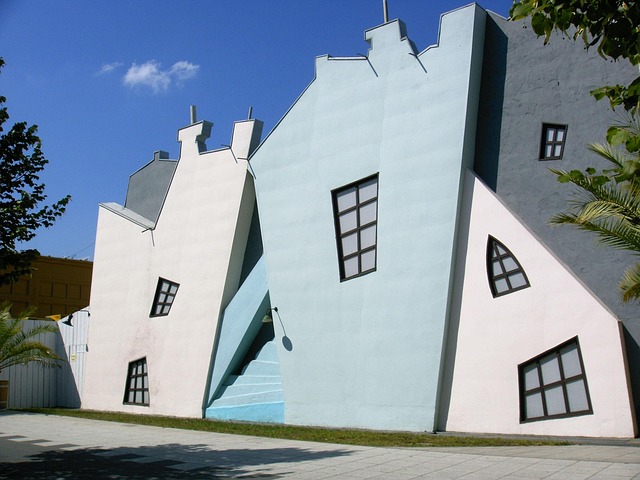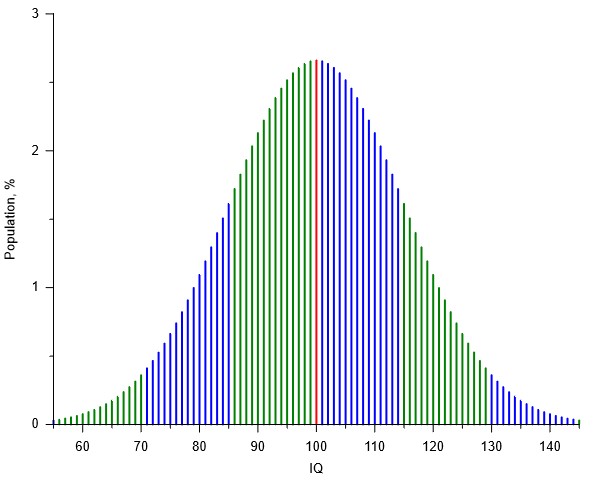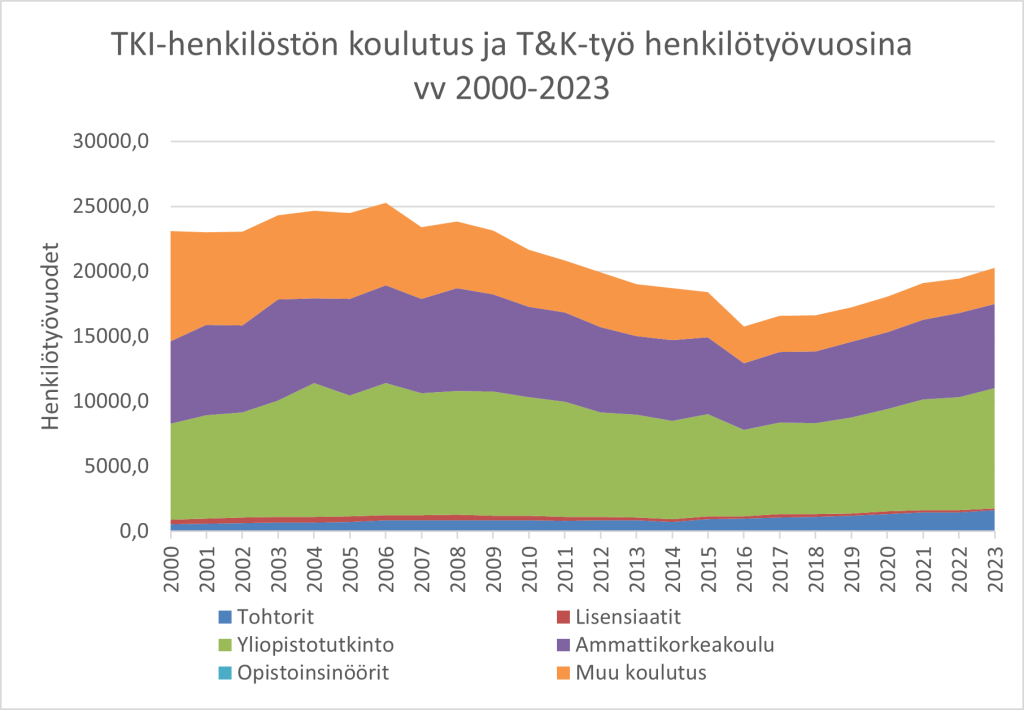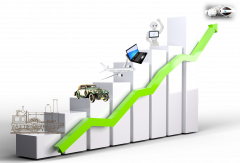Kari Lilja, TkT, Erikoistutkija; Sirpa Sandelin, TkT, Yliopettaja
English version: Click the link
Teknologiateollisuus totesi uutiskirjeessään 21.5.2025, että Suomen suurin vientiala vaatii korkeakoululinjauksessaan nostamaan maan koulutustasoa. Tavoitteena on, että 70 prosenttia nuorista aikuisista olisi korkeakoulutettuja vuoteen 2040 mennessä. Vaatimus on, paitsi kunnianhimoinen, myös täysin vailla minkäänlaista nykyisiin olosuhteisiin pohjautuvaa realismia.
Ammatillisen koulutuksen tasoa laskettiin olennaisesti Sipilän hallituksen aikana poistamalla sieltä vähäiset yleissivistävien aineiden tunnit ja pienentämällä muutenkin opetuksen resursseja. Tutkija Penni Pietilän mukaan opinnoista poistettiin kaikki, mistä ei ole suoraa ja välitöntä hyötyä töissä. Toteutettujen uudistusten viesti näyttäisi hänen mukaansa olevan, ettei työläisiä saa sivistää. Vuoden 2018 reformin keskeisenä perusteena pidettiin OKM:n vuonna 2017 julkaiseman dokumentin mukaan sitä, että työelämässä tarvitaan uudenlaista osaamista ja ammattitaitoa. Uudistuksen piti antaa ammatilliselle koulutukselle mahdollisuudet vastata työelämän tarpeisiin. Uudistuksen tavoitteena oli toisen OKM:n vuonna 2017 julkaiseman muistion mukaan lisätä oppisopimuskoulutuksen ja työpaikoilla tapahtuvan oppimisen houkuttelevuutta. Kaiken takana oli luonnollisesti raha. Kun opetusta siirretään yritysten vastuulle, säästyy rahaa.

Pieleen meni.
Useiden tutkijoiden ja monien yritysten mukaan ammatillisen tutkinnon pystyy nykyään suorittamaan taidoilla, joilla ei pärjää työelämässä. Yrityksillä ei ole mielenkiintoa, aikaa eikä muitakaan resursseja kouluttaa työssä oppijoita, ja kaikkein vähiten niitä ammattitutkinnon suorittaneita, joiden pitäisi osata ainakin perusteet. Reformin arkkitehdit perustelivat uudistusta myös jatkuvan oppimisen tukemisella. Ammatillisten aikuiskoulutuksen ja ammatillisten opetuksen yhdistämisellä haluttiin avata väylä jatkuvalle itsensä kehittämiselle ja oppimiselle työn ohessa. Ammatillisen perusopetuksen olennaisesti heikentyneet resurssit ovat kuitenkin vieneet pohjaa tuoltakin ajatukselta. Jos henkilön luku- ja kirjoitustaito, tiedot matemaattisissa ja luonnontieteellisissä aineissa, kielitaito ja opiskeluvalmiudet ovat olemattomat, ei hän pysty työn ohessa jatkokouluttautumaan, vaikka haluja olisikin.
Se on useimmille liian rankkaa.

Ja nyt puhuttiin vain ammatillisesta jatkokoulutuksesta. Korkeakoulututkinnon suorittaneilta odotetaan, ja on oikeus odottaa, tietyn tason yleissivistystä. Ymmärrystä siitä, mitkä luonnonlait pitävät maailmaa koossa, miten yhteiskunta toimii, mitä on tieteellinen tutkimus, mitä tarkoittavat demokratia ja sananvapaus, minkälainen vastuu niihin sisältyy, ja mikä merkitys rokotuksilla ja rokotuskattavuudella on koko yhteiskunnan terveydelle. Vielä 1970-luvun lopulla ja 1980-luvun alussa nämä opittiin keskikoulussa tai yläasteella ja lukiossa. Nykyään niitä saatetaan pitää valheena tai salaliittona, jos oma tietämys ja ymmärrys eivät riitä käsittelemään abstrakteja asioita. Ja korkeakoulutasoisissa opinnoissa joudutaan väkisin abstraktien asioiden äärelle. Käsitteellisten asioiden ymmärtäminen ja käsitteiden yhdistäminen syy-seuraussuhteiksi vaatii sekä koulusivistystä että tiettyä älykkyyttä.
Jotta korkeakoulututkinnon (ammattikorkeakoulu- tai yliopistotasoisen loppututkinnon) suorittaneiden määrä voisi olennaisesti kasvaa nykyisestä, tulisi tutkintovaatimuksia laskea nykyisestä. Kärjistetysti laskettuna voisi sanoa, että 70 % korkeakoulutusasteen saavuttaminen nykyisellä materiaalilla edellyttäisi, että korkeakoulujen tutkintovaatimuksia pitäisi laskea tasolle, joka alittaa ammatillisen toisen asteen ja lukion tason.
Sitäkö tässä halutaan? Halpaa, nimellisesti korkeakoulutettua työvoimaa?

Toki meillä on vaihtoehtoinen tie. Tie, jota korkeakoulutuksen parissa työskentelevät ovat jo muutaman vuoden haikailleet: Nostetaan ensimmäisen ja toisen asteen koulutuksen tasoa niin, että yhä useampi sieltä valmistuva omaa sellaiset tiedot ja taidot, että hänellä olisi edes teoreettinen mahdollisuus selvitä korkeakoulutuksen vaatimuksista. Sitten tarvitaan vielä motivaatio. On vaikea motivoida nuorta lähtemään 4-6 vuotta pitkään opiskeluputkeen, kun eri mediat tulvivat vinkkejä ammateista, joihin pääsee kokonaan ilman tai korkeintaan vähäisellä koulutuksella, ja jossa pääsee ilman kokemusta huippuansioihin.
Unelmahöttöä tuokin.
Vaikka nostaisimme ensimmäisen ja toisen asteen koulutuksen tasoa, ja saisimme jollain mahtikäskyllä lastensuojeluorganisaatiot, opiskelijajärjestöt ja ihmisoikeusjärjestöt vaikenemaan, biologia ja genetiikka ovat lahjomattomia. Vain tietty osuus populaatiosta on älyllisesti sillä tasolla, että se pystyy omaksumaan sen tietämyksen, jonka korkeakoulututkinnon suorittaneen oletetaan omaavan. Ja tuo osuus on tuntemattomasta syystä laskenut 2000-luvulla maissa, joissa älykkyysosamäärä perinteisesti on ollut korkealla tasolla. Näitä maita ovat esimerkiksi Iso-Britannia, Ranska, Tanska, Norja, Suomi, Viro ja Alankomaat. Syytä tähän ei ole löydetty, mutta yhdeksi vaikuttavaksi tekijäksi on arveltu ensimmäisen ja toisen asteen koulutuksen tasoon ja resursseihin tehtyjä muutoksia. Oma vaikutuksensa saattaa olla myös lasten ja nuorten oikeuksien korostamisella.

Käytännössä vaatimus 70 % korkeakoulutusasteesta tarkoittaa, että meidän pitäisi vuosikausia saada jokainen, jolla on edes teoreettiset mahdollisuudet suorittaa korkeakoulutason opinnot kunnialla, astumaan tuohon putkeen, ja sen lisäksi pitäisi vielä paapoa hänet putken läpi. Se, että nuorella on kädessään korkeakoulutodistus, ei kaikesta huolimatta ole mikään tae sitä, että hänellä on se tietämys ja osaaminen ja ne taidot, joita työelämässä tarvitaan. Eikä korkeakoulutus ole mikään automaattinen innovaatioiden takaajakaan. Korkeakoulutukseen – ja etenkin tieteellisen koulutukseen liittyy vaatimus uuden tiedon rakentumisesta aikaisemman tiedon varaan ja / tai kokeellisesti oikeaksi todistettuun tietämykseen (Evidence-based approach), mikä tehokkaasti hillitsee opiskelijoita vielä valmistuttuaankin lähtemästä mukaan johonkin täysin uuteen. Teknologiateollisuus kuitenkin perustelee vaatimustaan nimenomaan uusien innovaatioiden tarpeella.
Vuosina 2000–2023 teollisuuden TKI (tutkimus, kehitys ja innovointi) -toimintaan käyttämät työvuodet ovat kasvaneet vuoteen 2007 saakka, minkä jälkeen tuli pitkä laskukausi. Uudelleen TKI-toimintaan käytetty aika alkoi kasvaa vuonna 2018 ja on kasvanut siitä ainakin vuoteen 2023 asti. Vuonna 2000 muiden kuin korkeakoulututkinnon suorittaneiden osuus henkilötyövuosista oli yli kolmannes. Vuonna 2023 tuo osuus oli pudonnut vajaaseen 14 prosenttiin, eli lähes kaikki TKI-toimintaan osallistuvat ovat jo korkeakoulutettuja. Uutta Nokiaa ei ole kuitenkaan syntynyt.
Huolimatta siitä, että korkeakoulutettujen osuus TKI-henkilöstöstä on kasvanut. Tai ehkä juuri sen tähden.

Mikään innovaatio ei synny pelkästä teoriatiedosta. Tarvitaan ongelma, joko teoreettinen (miten maailmankaikkeus on saanut alkunsa), tai käytännönläheinen, jokapäiväiseen elämään liittyvä (miten kuivaisin astiat vaivattomammin), joka askarruttaa, ja johon haetaan ratkaisua joko tietoisesti tai alitajuisesti. Teollinen innovaatio on lähes aina kouluviisauden ja käytännön kokemuksen ja taitojen fuusio.
Voitaisiinko ajatella toisenlaista lähestymistapaa? Etenkin jos innovaatioiden lisääminen on se todellinen syy. Todellista DUAL-mallia, jossa ammatillisen koulutuksen, korkeakoulumaailman ja työelämän rajat poistettaisiin tai niitä ainakin laskettaisiin merkittävästi. Käytännössä se tarkoittaisi sitä, että henkilö suorittaisi ammatillisten opintojen ohessa korkeakouluopintoja, valmistuisi ensin ammattiin, astuisi työelämään ja jatkaisi korkeakouluopintoja työn ohessa, saaden opintopisteitä myös työstään, ja suorittaisi vuoden tai kaksi pidemmässä ajassa alemman korkeakoulututkinnon (Bachelor). Siitä hän voisi sitten jatkaa kunnianhimonsa ja kykyjensä mukaisesti joko ammatilliseen Master-tutkintoon tai tieteelliseen maisterintutkintoon ja siitä eteenpäin, koko ajan työelämää palvellen. Rajojen alentaminen ei tarkoittaisi vaatimusten ja tason alentamista, vaan pikemminkin päinvastoin, koska opiskelijat toisivat opintoihin mukaan kokemuksensa ja käytännön ongelmansa. Lisäksi seuraavalle portaalle selviytyisivät vain ne, jotka työpaikoilla ja opinnoissaan ovat osoittaneet kykynsä ja valmiutensa.
Tämänkaltainen malli on käytössä Saksassa, jossa pula osaavista tekijöistä on teollisuudessa vähintään yhtä polttava kuin meillä. Saksalainen yrityskulttuuri on hierarkkisempi ja jäykempi kuin meidän, joten emme ehdota saksalaista mallia sellaisenaan kopioitavaksi Suomeen, mutta vastaavat elementit voitaisiin mukauttaa meidän kulttuuriimme, työelämäämme ja koululainsäädäntöömme sopiviksi.

Myös Euroopan unionin ytimessä, Brysselissä, koulutusasiat ovat nousemassa tapetille. Ammatillista koulutusta lähellä olevat tahot pyrkivät tekemään aloitteen eurooppalaisen DUAL-mallin käyttöönotosta. Tuo malli ainakin sinä versiona, jota meille esiteltiin Koldingissa, poikkeaa olennaisesti esimerkiksi saksalaisesta mallista eikä välttämättä ainakaan lyhyellä tähtäimellä tuo ratkaisua teollisuuden osaamisvajeeseen. Voisikin olla hyvä, jos pystyisimme kehittämään oman suomalaiseen työelämään istuvan DUAL-mallin ennen direktiivin valmistumista.
English version
A university degree for everyone – I am dreaming, am I?
The Finnish Technology Industry stated in its newsletter on 21 May 2025 that Finland’s largest export sector demands that higher education policy of Finland should aim to raise the country’s level of education. The goal should be that 70 percent of young adults would have a higher education degree by 2040. The demand is not only ambitious, but also completely devoid of any realism based on current circumstances.
The level of vocational education was significantly declined during the era of Sipilä’s government by removing the few hours of liberal arts and by reducing teaching resources in general. According to researcher Penni Pietilä, everything that is not directly and immediately useful in work was removed from studies. According to her, the message of the implemented reforms seems to be that workers should not be educated. According to a document published by the Ministry of Education and Culture in 2017, the key justification for the 2018 reform was that new kinds of competence and professional skills are needed in working life. The reform was supposed to give vocational education the opportunity to meet the needs of working life. According to another memorandum published by the Ministry of Education and Culture in 2017, the aim of the reform was to increase the attractiveness of apprenticeships and workplace learning. Of course, money was behind everything. When responsibility for education is transferred to companies, money is saved.

It has gone wrong.
According to many researchers and many companies, it is now possible to complete a vocational qualification with skills that are not sufficient for working life. Companies have no interest, no time, nor other resources to train learners on the job, and, least of all, those who have completed a vocational qualification should at least know the basics. The architects of the reform also justified the reform by supporting continuous learning. By combining vocational adult education and vocational education, the aim was to open a path for continuous self-development and learning while working. However, the significantly weakened resources of basic vocational education have undermined that idea too. If a person’s reading and writing skills, knowledge of mathematics and natural sciences, language skills and study skills are non-existent, they will not be able to complete further education while working, even if they want to.
That is too hard for most people.

And now we were only talking about continuing vocational education. Those who have completed a university degree are expected, quite justifiably, to have a certain level of general education. An understanding of the laws of nature that hold the world together, how society works, what scientific research is, what democracy and freedom of speech mean, what kind of responsibility they entail, and what significance vaccinations and vaccination coverage have for the health of society. As recently as the late 1970s and early 1980s, these were learned at the latter part of primary level or secondary level. Today, they may be considered a disinformation or a conspiracy if one’s own knowledge and understanding are not sufficient to deal with abstract matters. And in university-level studies, one is forced to deal with abstract matters. Understanding conceptual issues and combining concepts into cause-and-effect relationships requires both school education and a certain level of intelligence.
In order to increase substantially the number of people with a higher education degree (a university of applied sciences or university-level final degree) from the current level, the degree requirements should be lowered from the current level. Roughly speaking, achieving a 70% higher education rate with the current material would require that the degree requirements for higher education institutions should be lowered to a level below the level of vocational secondary education and upper secondary education.
Is that what we want here? A cheap workforce that nominally has graduated higher education?

Of course, we have an alternative path. A path that those working in higher education have been hankering after for a few years now: Raise the level of primary and secondary education so that more and more graduates would have the knowledge and skills that would at least theoretically have a chance of coping with the requirements of higher education. But motivation is also needed. It is difficult to motivate young people to embark on a 4-6-year study program when various media outlets are flooded with tips about professions that can be entered with no or minimal education at most, and where you can earn top salaries without experience.
That’s nonsense.
Even if we raise the level of primary and secondary education, and somehow could silence child protection organizations, student organizations, and human rights organizations, biology and genetics are incorruptible. Only a certain proportion of the population is intellectually capable of absorbing the knowledge that a university graduate is supposed to have. And for some unknown reason, that proportion has declined in the 21st century in countries where IQs have traditionally been high. These countries include, for example, the United Kingdom, France, Denmark, Norway, Finland, Estonia, and the Netherlands. No reason has been found for this, but one factor has been suggested to be changes in the level and resources of primary and secondary education. Emphasizing the rights of children and young people may also have an effect.

In practice, the requirement of a 70% proportion of higher education degrees means that we should spend years getting everyone who has even a theoretical chance of completing higher education to enter that pipeline, and on top of that, we should also push them through the pipeline. The fact that a young person has a higher education certificate in their hand is still no guarantee that they have the knowledge, expertise and skills needed in working life. And higher education is not an automatic guarantee of innovation either. Higher education – and especially scientific education – is associated with the requirement that new knowledge should be built on previous knowledge and/or experimentally proven knowledge (Evidence-based approach), which effectively discourages students from embarking on something completely new even after they graduate. However, the technology industry justifies its requirements precisely by the need for new innovations.
Within the years 2000–2023, the number of work years spent on RDI (research, development and innovation) activities in industry increased until 2007, after which a long period of decline followed. The time spent on RDI activities began to increase again in 2018 and has increased since then until at least 2023. In 2000, the share of person-years spent by people without a university degree was more than a third. In 2023, that share had fallen to just under 14 percent, meaning that almost all those involved in RDI activities already have a university degree. Despite of this, no new Nokia has been created.
Even though the share of university graduates in RDI personnel has increased. Or perhaps precisely because of that.

No innovation is created from theoretical knowledge alone. You need a problem, either theoretical (how did the universe begin) or practical, related to everyday life (how do I dry dishes more easily), that is puzzling, and for which you seek a solution either consciously or subconsciously. Industrial innovation is almost always a fusion of academic wisdom and practical experience and skills.
Could we think of a different approach? Especially if increasing innovation is really the goal. A true DUAL model, in which the boundaries between vocational education, higher education and working life would be removed or at least significantly reduced. In practice, this would mean that a person would complete higher education alongside their vocational studies, first graduating from a vocational education, entering work life and continuing higher education alongside their work, also receiving credits from their work, and finally completing a lower university degree (Bachelor) in a one or two years longer period. From there, they could then continue, according to their ambition and abilities, either to a professional master’s degree or a scientific master’s degree and beyond, all this while serving working life. Lowering the boundaries would not mean lowering the requirements and level, but rather the opposite, because students would bring their experience and practical problems to their studies. In addition, only those who have demonstrated their abilities and readiness in their workplaces and studies would continue to the next level.
A model like this is in use in Germany, where the shortage of skilled workers in industry is at least as acute as it is in ours. German corporate culture is more hierarchical and rigid than ours, so we do not propose copying the German model as such in Finland, but similar elements could be adapted to suit our culture, working life and school legislation.

In the heart of the European Union, in Brussels, education issues are coming to the stage too. Parties close to vocational education are trying to take the initiative to introduce the European DUAL model. That model, at least in the version that was presented to us in Kolding, differs significantly from, for example, the German model and will not necessarily provide a solution to the skills shortage in industry, at least not in the short term. It would be good if we could develop our own DUAL model that fits Finnish work life before the directive is completed.
Lähteet – sources:
OKM: Ammatillisen koulutuksen reformin valmistelun aineisto (2017)
Matti-Pekka Tuomilehto: Ammatillisten opettajien näkemyksiä koulutusreformin vaikutuksista nuorten koulutukseen (2020)
Penni Pietilä: Äidinkielen luokka ja sukupuoli: etnografinen tutkimus äidinkielen/suomen opinnoista osaamisperusteisessa tekniikan alan ammatillisessa perustutkintokoulutuksessa (2025)
James R. Flynn, Michael Shayer: IQ decline and Piaget: Does the rot start at the top? (2018)
Tilastokeskus: TKI-tilastot
Artikkeli on kirjoitettu Euroopan unionin Erasmus+-ohjelman rahoittamien WIN4SMEs- ja BA&VET-hankkeide puitteissa. Vastuu artikkelissa esitetyistä näkemyksistä on yksinomaan kirjoittajilla.
This article was written in the framework of the projects Win4SMEs and BA&VET funded by Erasmus+ programme of the European Union. The sole responsibility for the views expressed in this article lies with the authors.

